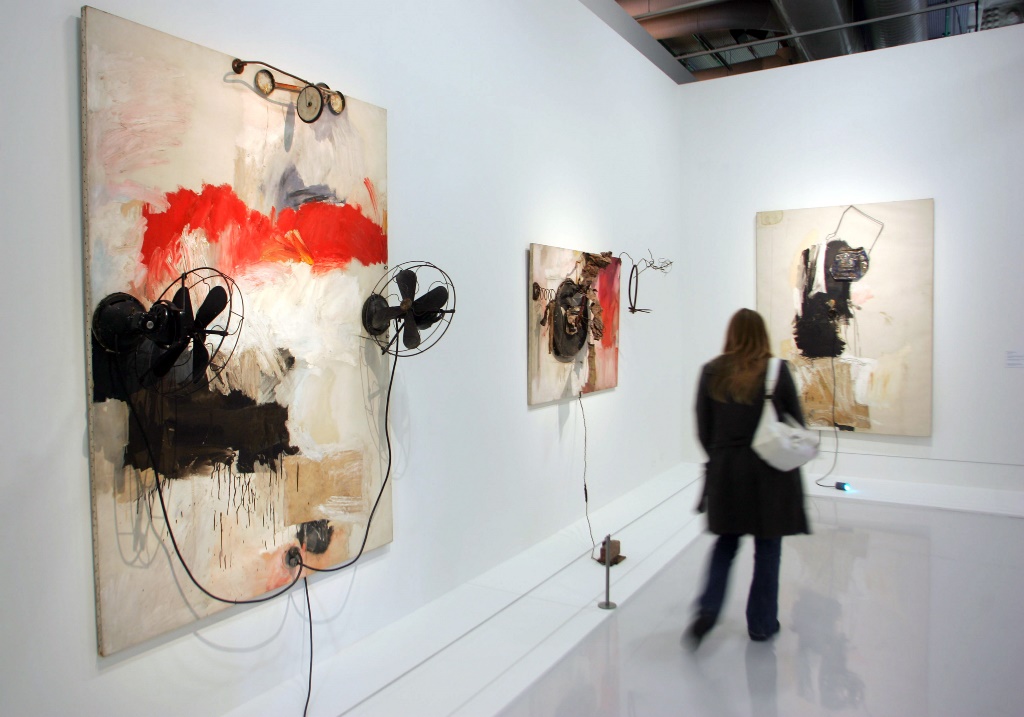
A counterculture is an organization that promotes values and behaviours that are opposite to those in mainstream culture. Countercultures usually reflect the aspirations, ethos and needs of a population. Its main aim is to change the way we live and think.
It appeals to freedom, nonconformity
The 1960s counterculture was a movement that sought to open up the space for people to express their ideas. Its ethos stressed the importance of equality of treatment and freedom from social norms, and it sought to create a space where ideas were nurtured without fear of violence. The Left in the 21stcentury advocates a call-out culture’ that restricts freedom of speech and expression by using symbolic prohibitions.
The counterculture movement was first born in the mid-1960s. It began when middle-class youth started mixing politics with culture. These young people were protesting against injustices such as racism and inequitable wealth distribution. While peaceful movements are not uncommon, many of these youths' social reputations can lead to conflicts with local law enforcement officials. The Kent State shootings were an example of this.

It is a proponent of consumerism
Consumerism can be defined as the tendency to purchase more stuff. It's a way to express yourself and create your identity. Sociologists and economists see consumerism as a positive thing, but they also see the negative sides. Consumers with high levels of consumption often have lower moods, greater difficulty in relationships, and other psychological issues. Ultimately, consumerism is a form of self-gratification.
This consumerism can be seen as a symptom of a broader problem that must be addressed. If a person has a Tesla, they might leave it in their driveway. While the car's function may be in doubt, it is still a sign that someone values consumerism.
It is a mentality of inept transmission
The digital counterculture exists as a result of the current social and cultural power structure. As a result, it tends to have some similarity to mainstream society. We'll be discussing the relationship between digital countercultures (mainstreams) and mainstreams (digital countercultures). The major difference between the two is the degree of social-cultural capital.
It is a criticism of modern social initiatives
Counterculture is a school of philosophy that rejects the modern world's values, and especially the current social initiatives. Herbert Marcuse, the founder of Counterculture, was a writer who became the intellectual foundation of student protest movements. Marcuse believed that progress was inextricably tied to unfreedom. Therefore, he advocated a civilisation based on fundamentally new experiences of being, nature and existential relations.

Counterculture emerged as an intensely personal revolutionary movement during the 1960s. It included many components, such as the communal/anarchist movement. Its purpose was to restore a simpler social climate and to criticize the modern tendency to massification and uniformity.
FAQ
What are some good aspects of pop culture
Pop culture doesn't have to be bad. Pop culture is a great source of entertainment. It allows people to express creativity. Pop culture can be used as a platform for artists to promote and market their work.
Pop culture's greatest asset is its ability to bring people together. Everyone wants to see the same shows. Everyone likes the same music. Everybody likes the exact same movies. Pop culture allows us connect.
It is not healthy for everyone, however. There are films that glorify violence. Some television programs make fun at people with mental disorders. Others encourage their fans and followers to get high.
So what should we do with the negative aspects of pop culture?
We should try to avoid the negative parts of pop culture. It shouldn't be allowed to influence us. It can pose a threat to our health. It can even lead to criminal activity. It can even cause problems in our relationships.
We need to consider whether pop culture is helping society or hurting it. Is pop culture promoting good values or negative ones? Are people being indoctrinated to do terrible things?
Let's not forget to ask ourselves if our world is fulfilling. Are we satisfied with the music we listen? The TV shows we watch? What clothes do we wear?
If we care about our future, we must take responsibility for our actions. We must decide the world we want. Then, we can choose which type of pop culture to follow.
Why pop music is popular?
Pop music is popular because it is fun! Pop music can make you feel happy and give you a feeling of freedom. People listen to pop music and can think about nothing but themselves. They don't have worry about what people think. Pop music is a hugely popular genre. People like listening to songs that make them feel good. You can turn the radio on if you feel down. You may even find yourself singing along. Pop music has been a huge success over the years.
Are Tik Toks pop culture?
The answer is yes! It's not just for teenagers anymore. You can share these videos with your friends to express yourself, show off, or just for fun.
The app is used daily by more than 200 million people around the globe. This number continues to grow by millions every single day.
TikTok offers brands a unique opportunity to connect with consumers and establish meaningful relationships.
TikTok also has many influencers that have built huge followings. These creators create original content to engage audiences all over the globe.
So, what are you waiting? Here are four methods to capitalize on this trend.
-
Make viral content
-
Engage Influencers
-
Use Visuals Effectively
-
Be Creative With Your Audience
How did pop music become popular?
It was an accident. The mistake that caused the first song to be written was when someone accidentally knocked a piano over while playing on New Years Eve 1920.
The recording company liked what it heard and decided that the single would be released.
This single was the first to be officially recorded.
Pop music has become today's most popular form for musical entertainment.
How did pop culture develop?
Technology was the driving force behind popular culture's development. As people became more mobile, it developed. Mass communication was made possible by the invention of radio. This allowed for the rise of television and the birth of the internet.
People began using computers at home, and were then exposed to computer games. These games were originally played on consoles like Sony Playstation 3 or the Nintendo Wii. These games can be downloaded online for free. Consequently, many young people play video games instead of watching TV.
Video games are very popular with children and teenagers. You can play them alone or with your friends online. Call Of Duty games and Grand Theft Auto have a lot of violence. Parents are concerned about their children playing these violent games. Others find it exciting to see what happens when a character dies.
Music videos are another way pop culture influences youth. They provide information about celebrities and current trends. These celebrities are a favorite of young people. Music is an integral part of our lives.
Many artists use special effects in music videos to enhance their songs. To make their appearance more attractive, rappers may wear makeup or wigs. Some musicians have to go through extreme physical and mental challenges in order show their bodies. Many singers sing in costumes.
Music is available in a wide variety of formats today. You can listen to whatever you like. But this isn't always good news. Sometimes music can encourage violence. People are often angry when they hear certain songs or words. Sometimes, they even commit criminal acts.
50 Cent is a recent example of this. One line in his song Get Rich Or Die Trying says: "I'm going after a motherfucker / But I don't know how, but I might." This song was thought to mean that he would murder someone. A man called him up and threatened him. 50 Cent changed the lyrics. It now says, "I'll shoot one bitch down/ I don’t know why, but I just might."
Popular culture is essential. We need to be able to see how it affects our lives. If we don’t know how it affects our lives, we won’t have the ability to protect ourselves from its negative consequences.
How can we avoid the dangers posed by pop culture?
First, we should recognize when pop culture is influencing us. It is important to recognize when pop culture influences us. Then, it is crucial that we do not allow ourselves to be influenced. These are some ways to avoid bad influences.
-
Avoid watching Game Of Thrones or other violent shows.
-
Do not spend too much time on the Internet. Read books instead.
-
You should watch less TV. Spend your time doing activities that are healthy.
-
Take care of what you post online. It is impossible to delete comments after they are posted.
-
Check that websites you visit remain safe. Before you submit personal information, make sure they are checked.
-
Do not be compelled to do anything that could endanger your safety.
Talk to an adult to help you if you find yourself addicted to pop music. You can reach out to your local library or National Center For Missing &exploited Children (1 800-THE LOST).
What are some examples of pop culture in 2020?
The music business is changing rapidly. In fact, this year we saw Billie Eilish (Post Malone) and Travis Scott reach number 1 in Billboard's Hot 100 chart. This was an incredible feat for any artist.
The same goes for streaming services. Spotify reported that it streamed more than 10 billion hours worth of audio content last fiscal year. It's 5x more than the content users were listening to five years ago.
This has led to a dramatic shift in how media is consumed. These days, people spend more time consuming content than creating it.
Everybody, from babies to old age, can now listen to high-quality audio content. This allows anyone to record, edit and mix their music.
To be able to sing your favorite song, you don't need to attend university to study classical instrumentation. You can download an app, add voice and upload to YouTube.
Even if you don’t want to create music yourself, why stop watching someone else do it? There are countless channels dedicated to making videos of songs ranging from covers to parodies.
Statistics
- Latinos represent roughly 19% of the U.S. population. (npr.org)
- Yet a Nielsen study shows they account for 42% of the country's most-watched content on streaming services. courtesy Nielsen (npr.org)
- [17][18][19]Definition[edit]According to author John Storey, there are various definitions of popular culture. (en.wikipedia.org)
- Less than a decade later, that statistic rose to 90% (Dager, n.d.). (socialsci.libretexts.org)
- For example, the term hater meaning someone who strongly undermines or criticizes others, often due to pathetic jealousy, likely emerged from hip hop culture, such as the term playa hateras, used by influential rapper Biggie Smalls as early as 1995. (simplicable.com)
External Links
How To
What is the popular culture that you can access using media technology?
Pop culture is everywhere. It's everywhere: books, movies, music, television shows, video games, social networking sites, etc.
Popular culture influences our lives. The things we read in magazines and listen to on the radio influence our daily routines. We watch TV series, play video games, go shopping, hang out with friends, attend parties, meet people online, and spend time surfing the Internet.
Popularity doesn't necessarily mean it's good business.
Media technologies help with this. They offer tools that enable us to connect with consumers and access popular culture.
You can use media technologies to:
-
Content about products and/or services
-
Engage with fans by introducing them to their favorite authors, actors, or musicians
-
Promote brands and companies
-
Advertising
-
Track consumer trends
So if you're looking to build brand awareness, attract more customers, generate leads, increase sales, or boost customer loyalty, you need to get familiar with popular culture. You can do this by utilizing media technologies.